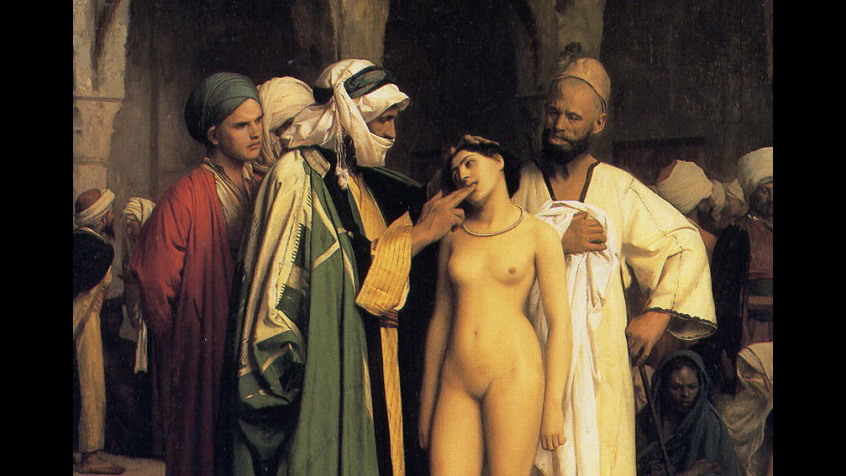Communist-Jihad at work again demonstrating their Nazi proclivities and the burning of the books.
***Article first published by 'Jihad Watch' on April 30, 2019***
History has a notorious Islamophobic bias. The only way to get rid of Islamphobia is to dispose of history entirely.
That’s a difficult challenge. Censorship is a lot easier.
An American art museum is demanding that a German far-right party stop using one of its paintings, portraying a 19th-century slave auction, in a campaign poster for the European elections.
“We are strongly opposed to the use of this work to advance any political agenda,” Olivier Meslay, the director of the Clark Art Institute in Williamstown, Massachusetts, told The Associated Press. “We did not supply the painting to the AfD,” he said, using the acronym for the party Alternative for Germany.
The 1866 oil-on-canvas painting “Slave Market,” by Jean-Leon Gerome, shows a black, apparently Muslim slave trader displaying a naked young woman with much lighter skin to a group of men for examination.
The AfD’s Berlin branch said they put up 30 posters of the painting across the German capital with the slogan: “So that Europe won’t become Eurabia.”
The party, known for its anti-Muslim stance, said it won’t take down any of the posters.
The Clark Art Institute owns the painting because Sterling Clark, a man its current staff don’t seem to like very much once bought it. It doesn’t own the rights to it.
So it has no legal authority to do anything.
The painting, and some of Gerome’s other work, were clearly meant to depict the dehumanizing qualities of slavery. While most viewers focus in on the woman in the painting, it also depicts an African man being examined and forced into slavery.
The Islamic slave trade was conducted in both Africans and Europeans.
Finally, Gerome was both an artist and a scholar. The painting is set in an actual place in Cairo. It’s unknown whether the artist personally observed the slave trade, but it’s likely that he did. And the trade continued for much longer than most people care to realize. In some Muslim countries, it continues today.
The Cairo setting is an important reminder that Egypt was a major gateway for the African slave trade. Censoring the painting won’t banish that truth.
